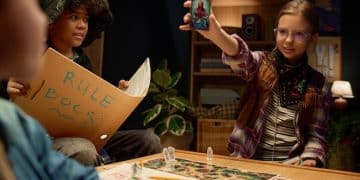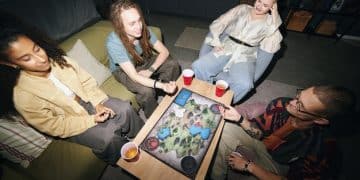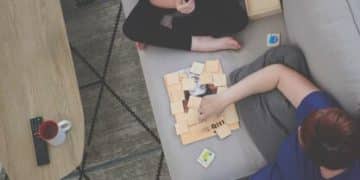Mastering Tabletop RPG Miniature Painting: A Comprehensive Guide
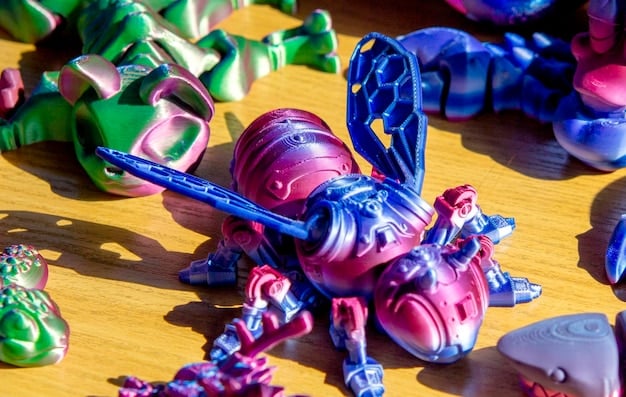
Tabletop RPG miniature painting is a rewarding hobby that transforms unpainted figurines into vibrant characters and creatures, enhancing the gaming experience for both players and collectors by adding a personal touch and visual appeal.
Embark on a creative journey and discover the art of tabletop RPG miniature painting, where you can transform your miniature armies from bland plastic to vibrant pieces of art, ready to dominate the gaming table.
Getting Started with Tabletop RPG Miniature Painting
Diving into the world of tabletop RPG miniature painting can seem daunting, but with the right approach, it’s an accessible and enjoyable hobby. This section provides a roadmap for beginners, covering essential tools and materials, preparation techniques, and basic painting skills to build a solid foundation.
Essential Tools and Materials
Before picking up a brush, it’s crucial to equip yourself with the necessary tools. These tools will not only make the painting process smoother but also ensure a higher-quality finish for your miniatures.
- Paints: Acrylic paints are the standard for miniature painting due to their versatility and ease of use.
- Brushes: A set of high-quality brushes in various sizes is essential. Look for brushes with fine tips for detail work.
- Primer: Primer is a base coat that helps paint adhere to the miniature’s surface.
- Palette: A wet palette is ideal for keeping your paints moist and workable for longer periods.
Preparing Your Miniatures
Proper preparation is key to a successful paint job. This involves cleaning the miniatures, removing mold lines, and applying a primer coat. These steps ensure that the paint adheres properly and the final result looks clean and professional.
- Cleaning: Wash the miniatures with warm, soapy water to remove any mold release agents.
- Removing Mold Lines: Use a hobby knife or mold line remover to carefully scrape away any visible mold lines.
- Priming: Apply a thin, even coat of primer using a spray can or airbrush.
Starting with the right tools and preparation sets the stage for a rewarding miniature painting experience, turning your tabletop figures into unique and personalized pieces.
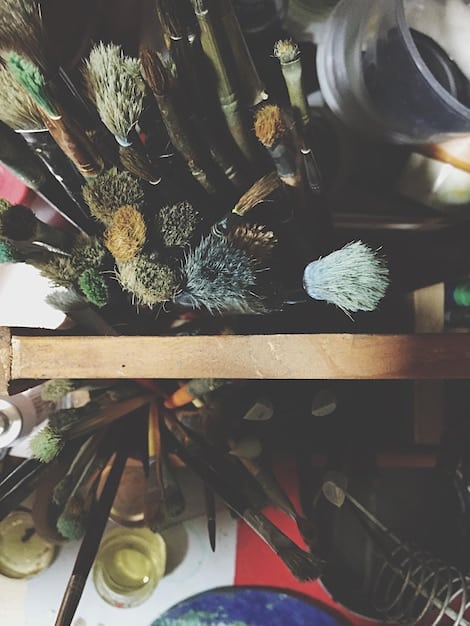
Basic Painting Techniques
Mastering the basics is essential for any miniature painter. This section explores foundational painting techniques, including basecoating, drybrushing, washing, and highlighting, which form the building blocks of impressive miniature art.
Basecoating
Basecoating is the first layer of paint applied to your miniature after priming. This layer provides a uniform color foundation for subsequent techniques, ensuring that all colors appear as intended.
Drybrushing
Drybrushing is a technique used to highlight raised areas on a miniature. By lightly dragging a dry brush loaded with paint over the surface, you can create a textured and weathered look.
Washing
Washing involves applying a thin, diluted paint over the entire miniature. This technique fills in the recesses and adds depth and shadows to the figure.
These basic techniques are the foundation for creating stunning miniatures, allowing you to add depth, texture, and realism to your tabletop figures.
Advanced Painting Techniques
Once you’ve mastered the basics, you can explore more advanced techniques to enhance your miniature painting skills. Layering, blending, and non-metallic metal (NMM) are some of the techniques that can take your miniatures to the next level.
Layering
Layering involves applying thin, translucent layers of paint to create smooth color transitions. This technique is often used to blend colors and create realistic shading on miniatures.
Blending
Blending is similar to layering but involves creating a seamless transition between colors. This can be achieved by using a wet blending technique or by feathering the edges of each layer.
Non-Metallic Metal (NMM)
NMM is an advanced technique that simulates the appearance of metal using only non-metallic paints. This technique requires careful planning and precise brush control to create the illusion of metallic reflections.
- Start with a dark base color.
- Apply highlights gradually, using lighter shades of the same color.
- Use white or light gray to create specular highlights.
With practice, these advanced techniques will allow you to create stunningly realistic and visually striking miniatures.
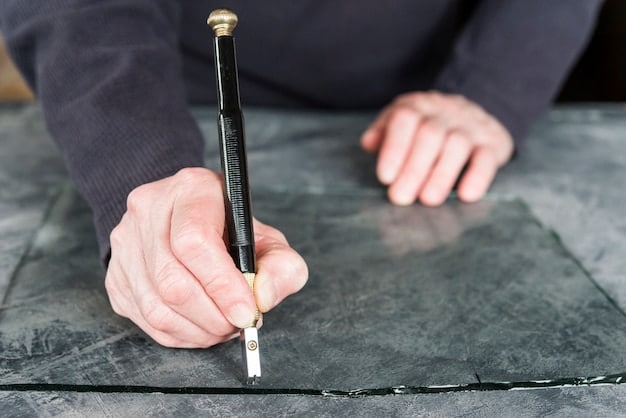
Choosing Colors and Creating a Color Scheme
Selecting a harmonious color scheme is crucial for bringing your miniatures to life. This section explores color theory basics and provides tips for creating cohesive color schemes that enhance the overall visual appeal of your painted figures.
Understanding Color Theory Basics
A basic understanding of color theory can significantly improve your miniature painting results. Colors can be categorized as primary, secondary, and tertiary.
- Primary colors: Red, blue, and yellow. These colors cannot be created by mixing other colors.
- Secondary colors: Green, orange, and purple. These colors are created by mixing two primary colors.
- Tertiary colors: These colors are created by mixing a primary color with a neighboring secondary color.
Creating a Cohesive Color Scheme
When creating a color scheme, consider the overall theme and purpose of the miniature. Here are a few common color scheme options:
- Monochromatic: Using different shades and tints of a single color.
- Complementary: Using colors that are opposite each other on the color wheel.
- Analogous: Using colors that are adjacent to each other on the color wheel.
Choosing the right colors and understanding color theory can greatly enhance the visual impact of your miniatures, making them stand out on the tabletop.
Basing and Displaying Your Miniatures
Once your miniatures are painted, basing and displaying them adds a final touch that enhances their presence. This section covers basing materials and techniques, as well as display options for showcasing your painted miniatures.
Basing Materials and Techniques
Basing involves adding texture and detail to the base of your miniature. This can be achieved using a variety of materials, such as:
- Sand and gravel
- Static grass
- Cork
- Rocks
Display Options for Showcasing Your Painted Miniatures
Once your miniatures are painted and based, you’ll want to show them off! Here are a few display options:
- Display cabinets
- Gaming tables
- Miniature carrying cases
Choosing a creative base and display setting is essential to showcasing your painted miniatures.
Common Mistakes and How to Avoid Them
Even experienced miniature painters make mistakes. This section outlines common pitfalls to avoid, such as thick paint, insufficient preparation, and poor lighting, offering practical tips to improve your painting process and results.
Using Thick Paint
One of the most common mistakes is using paint that is too thick. Thick paint can obscure details and create a textured, uneven finish. To avoid this, thin your paints with water or a paint thinner.
Insufficient Preparation
Rushing the preparation stage can lead to poor adhesion and a less-than-desirable finish. Always take the time to clean and prime your miniatures properly to ensure the best possible results.
Poor Lighting
Painting under poor lighting conditions can make it difficult to see fine details and accurately judge colors. Invest in a good hobby lamp with adjustable brightness and color temperature to improve your visibility.
By avoiding these common mistakes, you can improve your miniature painting skills and achieve more professional-looking results.
| Key Point | Brief Description |
|---|---|
| 🎨 Essential Tools | Acrylic paints, brushes, primer, palette. |
| 🖌️ Basic Techniques | Basecoating, drybrushing, washing. |
| ✨ Advanced Techniques | Layering, blending, NMM. |
| 🌱 Basing | Use sand, grass, cork to enhance models. |
FAQ’s
▼
Acrylic paints are generally considered the best for miniature painting, offering a good balance of durability, ease of use, and color selection. Brands like Vallejo, Citadel, and Army Painter are popular choices.
▼
Thin your paints with water or a paint thinner specifically designed for acrylics. Apply multiple thin layers rather than one thick layer to maintain detail and prevent clumping. A wet palette can also help keep your paints from drying out too quickly.
▼
Priming creates a uniform surface for the paint to adhere to, ensuring better coverage and preventing the paint from chipping or rubbing off easily. It also helps to bring out the details of the miniature.
▼
Select brushes with fine tips for detail work and larger brushes for base coating. Synthetic brushes are a good, affordable option, but higher-quality sable brushes can provide better control and precision. A variety of sizes will be useful.
▼
Websites, YouTube channels, and online forums dedicated to miniature painting offer tutorials, tips, and inspiration. Some popular resources include Warhammer TV, Miniac, and various miniature painting communities on social media.
Conclusion
Mastering tabletop RPG miniature painting is an enriching journey that enhances both the gaming experience and artistic expression. By understanding essential techniques and avoiding common pitfalls, you can bring your miniatures to life, creating a visual spectacle that complements the immersive world of tabletop gaming.
